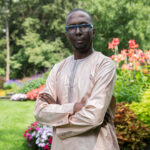The journal International Affairs, now a century old, appeared in the aftermath of the World War I, in a context of reconfiguration of the colonial world, and more specifically, at a time of deep white anxiety about the future of empire. At the turn of the Nineteenth century, in the wake of the U.S. acquiring primacy as a world power following the Spanish American war, the devastating effects (to the British imperial prestige) of the Second Boer War, and the Russo-Japanese war all exacerbated white fear and racial anxiety. Thus, questions emerged for instance, such as how would the British empire reconfigure itself into a tiered, racially based, post-genocidal colonial administration. Hence the Commonwealth, inspired by the South African “experiment,” which also provided a blueprint for the League of Nations’ Mandate System.
The move was to, as Peter Vale and Vineet Thakur explain, reimagine empire as “an organic union of white settler colonies,” with race as its organizing principle. Such was the real origin story of IR as an academic discipline. The architects of that reconfiguration, Vale and Thakur argue, were also the progenitors of the Royal Institute of International Affairs, which came to be known as Chatham House, publisher of the journal International Affairs. These institutions then were not merely bystanders or detached observers of racial violence and colonial plunder. They were at the heart of the colonial enterprise, both in theory and practice. That this special issue and set of articles has appeared in the centennial issue of International Affairs is therefore to be celebrated.
academics and policy-makers could, at the very least be described as bedfellows
Yet, what exactly does the journal’s acknowledgement of their legacy of scholarship, in the words of the its current editor Andrew Dorman, “draw[ing] on unacceptable assumptions and theories about world politics – not least during the colonial era” mean? What such reckoning must entail for academic journals beyond opening their pages for critical scholarship? Or does this suffice? That Chatham House was created with the explicit mandate of furthering colonial administration in 1919, as Jasmine K. Gani asserts, certainly merits further questions about what to do with that legacy. Or are we merely witnessing, in a post Black Lives Matter era, another “rebranding of academic journals”?
Of imaginary gaps and bridges
One of the main takeaways, across many of the articles included in the special issue, is that theory and praxis, or academia and policy, have closely worked together, be it during the colonial era, or in the current manifestation of imperial reach and domination. As much as we hear about this supposedly theory-practice gap in need to be bridged, it is clear that academics and policy-makers could, at the very least be described as bedfellows.
Chatham House and International Affairs were at the heart of the colonial enterprise
If, as Randolph B. Persaud asserts, “[Disciplinary IR] theorists are the organic intellectuals of American global hegemony”, does the discourse on the theory-policy gap hold? Ditching that discourse once and for all would allow for a better recognition of the IR discipline and its journals’ complicity with and enabling of the pursuit of imperial domination and international politics of race, racism, and empire. Jasmine K. Gani and Jenna Marshall put it succinctly in this way: “academic knowledge production has acted as a supplier of racial, civilizational and imperialist discourse, ideology and ‘logic’ that were (and are) disseminated through research, teaching and broader public intellectualism.” IR then has never been disconnected to the real world, the imperial policies of genocidal colonialism, racial violence, and plunder. In other words, there was never an “ivory tower.”
On Repair and Re-pairing
In as much as this special issue is a call for “repair”, it urges to consider, within the pages where these calls are made, what repair would and should entail and how the journals publishing these calls intend to engage in such reparative praxis. To repair means to make whole again. But what is to be made whole again in this case? Is it possible? Is it desirable? What alternatives ought to be explored? Repairing also evokes re-pairing, bringing back together that which were distanced. IR journals have yet to articulate such agenda, beyond bringing together critical and hitherto silenced scholars in conversation. One may ask, for instance, what will it take to overcome the “methodological whiteness” and “the racial status quo of IR,” as Kwaku Danso and Kwesi Aning put it? “[T]he old and new IRs are inextricably linked,” as Persaud argues, insofar as there still is a “near-dogmatic insistence that a handful of western states have figured out the path to a glorious future for all humanity, regardless of race, class, culture and history” even though, as Amitav Acharya writes, that same handful of western states were the unique and unprecedented “combination of racism, empire, slavery, and the capitalist economy,” making racial internationalism a distinct feature of the liberal international order.


0 Comments
Trackbacks/Pingbacks